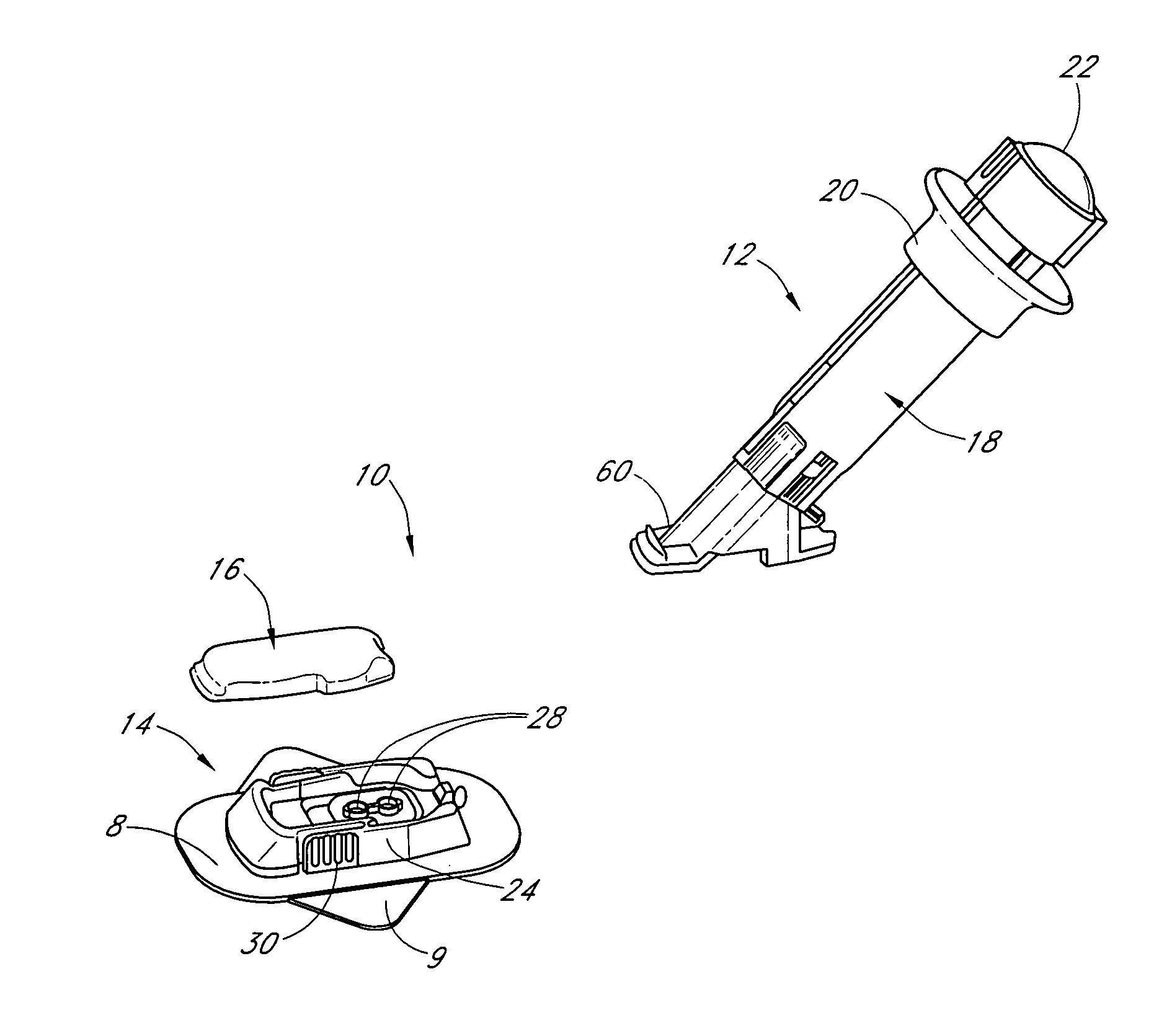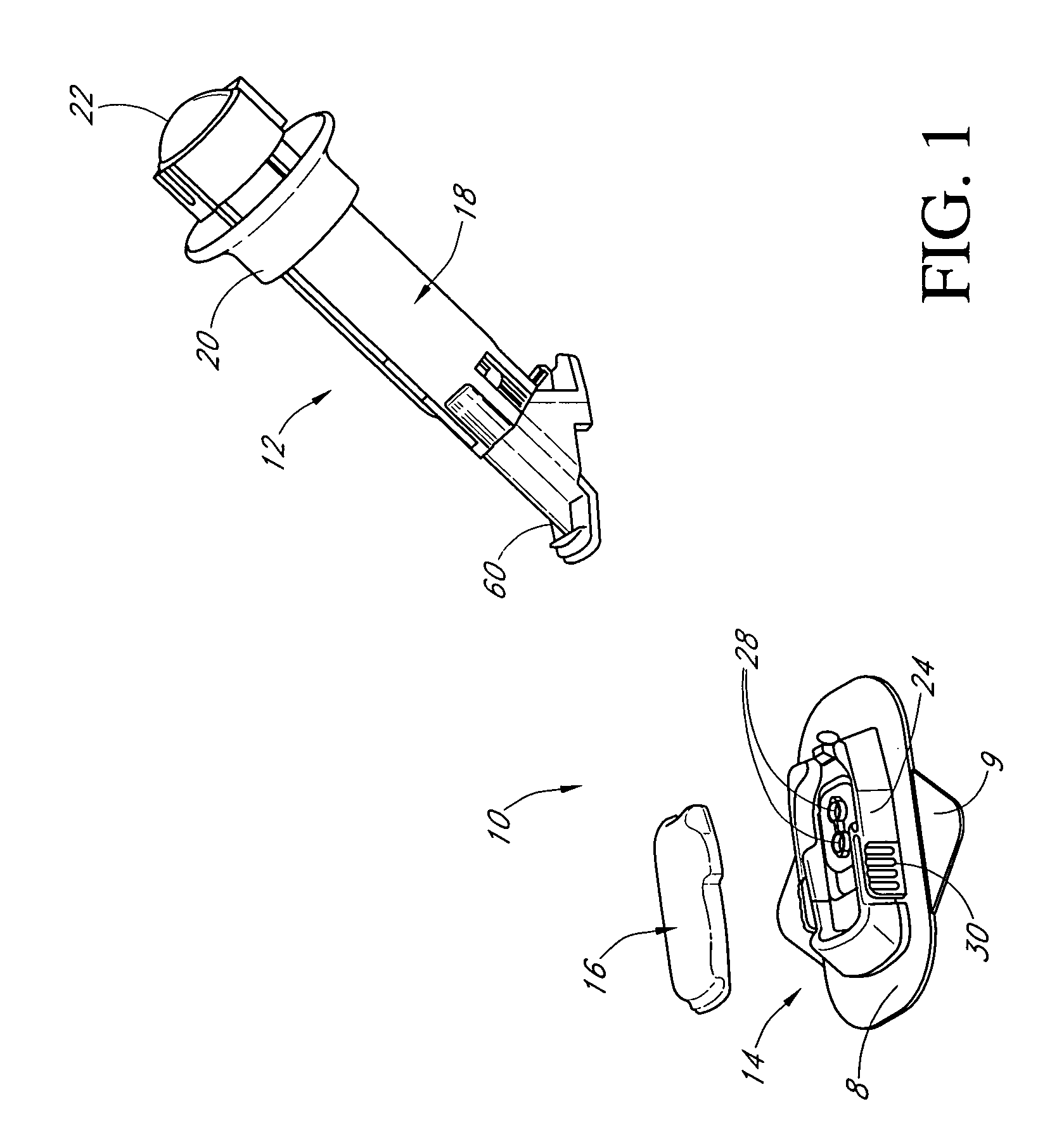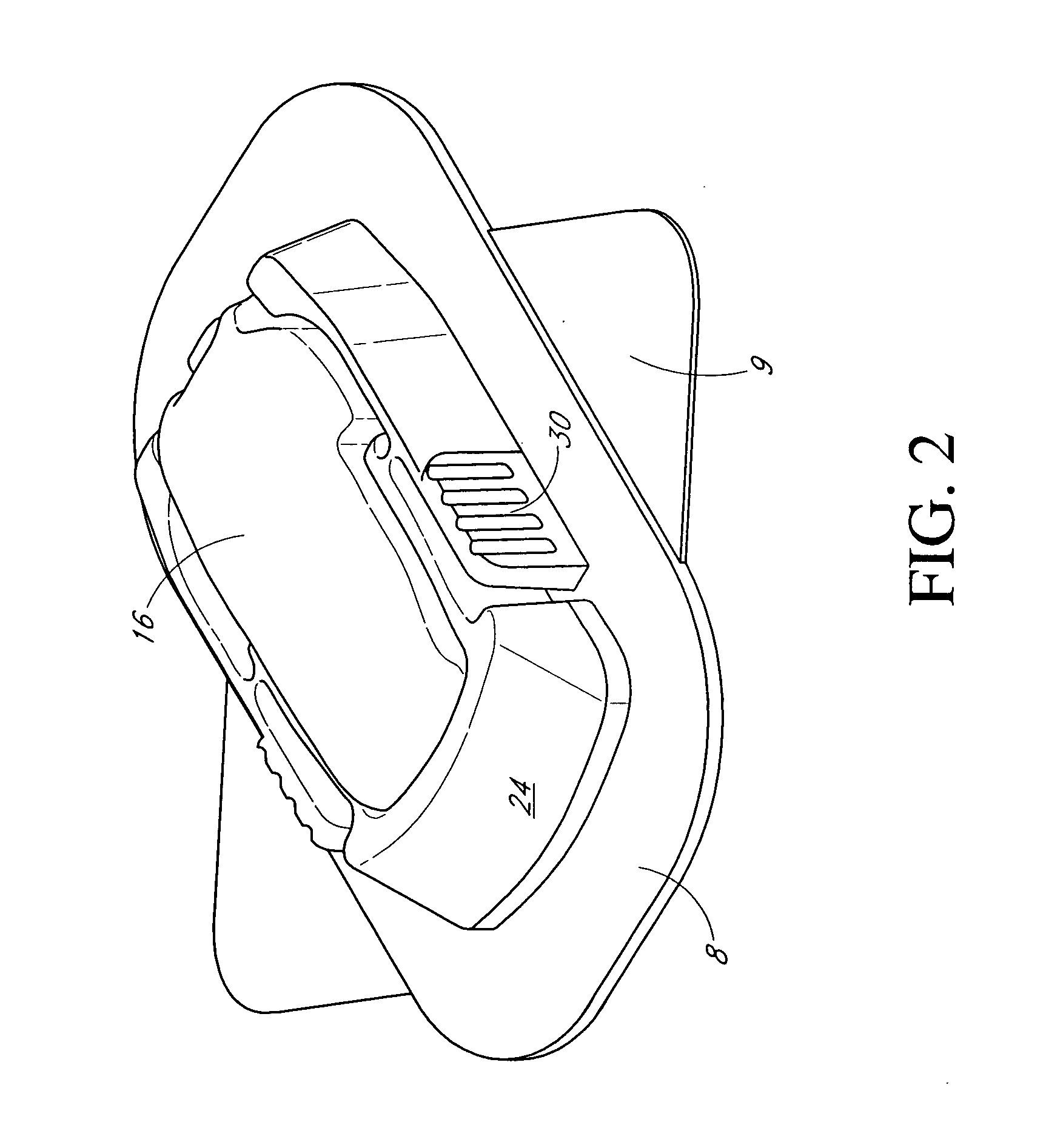Membranes for an analyte sensor
a technology of analyte sensor and membrane, which is applied in the field of glucose measurement devices, can solve the problems of inability to know the blood glucose value of the patient, incur dangerous side effects, and physiological derangements,
- Summary
- Abstract
- Description
- Claims
- Application Information
AI Technical Summary
Benefits of technology
Problems solved by technology
Method used
Image
Examples
example 1
Transcutaneous Glucose Sensor with Cellulose Acetate Interference Domain
[0647] A short term (transcutaneous) sensor was built by providing a platinum wire, vapor-depositing the platinum with Parylene to form an insulating coating, helically winding a silver wire around the insulated platinum wire (to form a “twisted pair”), masking sections of electroactive surface of the silver wire, vapor-depositing Parylene on the twisted pair, chloridizing the silver electrode to form silver chloride reference electrode, and removing a radial window on the insulated platinum wire to expose a circumferential electroactive working electrode surface area thereon, this assembly also referred to as a “parylene-coated twisted pair assembly.”
[0648] An interference domain was formed on the parylene-coated twisted pair assembly by dip coating in an interference domain solution comprising 7 wt. %, 50,000 molecular weight cellulose acetate (Sigma-Aldrich, St. Louis, Mo.) in a 2:1 acetone / ethanol solvent ...
example 2
Transcutaneous Glucose Sensor with Cellulose Aacetate / Nation® Interference Domain
[0651] Transcutaneous glucose sensors with a cellulose acetate / Nation® interference domain (CA / Naf sensors) were constructed as described with reference to the transcutaneous glucose sensors with a cellulose acetate interference domain above; however, after dip coating the parylene-coated twisted pair assembly in the cellulose acetate solution, the cellulose acetate coated assembly was further dip coated in a 5 wt. % Nation® solution in low aliphatic alcohols (Sigma-Aldrich, St. Louis, Mo.) and allowed to dry at room temperature for 10 minutes. This Nation® solution dip coating step was repeated twice to form three layers of Nation® over the cellulose acetate layers. Enzyme and resistance domains were subsequently coated onto the cellulose acetate / Nation® interference domain coated assembly, and selected test sensors were exposed to electron beam radiation, as described in more detail above.
example 3
In Vitro Testing
[0652] In vitro tests were run to evaluate the ability of the above-described sensors to resist uric acid, ascorbic acid, and acetaminophen. Namely, four CA sensors (two before and two after electron beam exposure) were immersed in 40, 200, and 400 mg / dL glucose while their electrical signal was monitored. Subsequently, the sensors were immersed into a solution containing 400 mg / dL glucose plus one of either 0.5 mM uric acid (FIG. 24A), 0.23 mM ascorbic acid (FIG. 24B), or 0.22 mM acetaminophen (FIG. 24C).
[0653]FIG. 24A is a bar graph that illustrates the ability of the CA sensors to resist uric acid pre- and post-electron beam exposure. The x-axis represents the sensors involved in the in vitro testing. Namely, 3CA represents an interference domain formed on sensors comprised of four dip coated layers of cellulose acetate as described above. Half of the CA sensors were tested pre-electron beam exposure and half of the sensors were tested post-electron beam exposu...
PUM
| Property | Measurement | Unit |
|---|---|---|
| Time | aaaaa | aaaaa |
| Time | aaaaa | aaaaa |
| Concentration | aaaaa | aaaaa |
Abstract
Description
Claims
Application Information
 Login to View More
Login to View More - R&D
- Intellectual Property
- Life Sciences
- Materials
- Tech Scout
- Unparalleled Data Quality
- Higher Quality Content
- 60% Fewer Hallucinations
Browse by: Latest US Patents, China's latest patents, Technical Efficacy Thesaurus, Application Domain, Technology Topic, Popular Technical Reports.
© 2025 PatSnap. All rights reserved.Legal|Privacy policy|Modern Slavery Act Transparency Statement|Sitemap|About US| Contact US: help@patsnap.com



